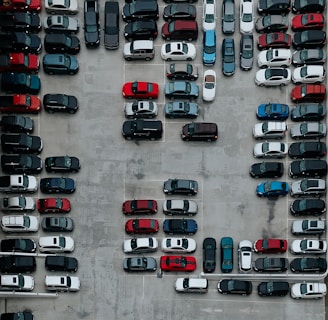India’s Smart Cities Mission: Changing Urban India One City at a Time
Explore how India’s Smart Cities Mission is transforming urban life through technology, digital governance, and sustainable infrastructure. Discover key projects, success stories, and what’s next for smarter cities.
Venkata Ram C. R.
5/10/20253 min read


India’s cities are growing at breakneck speed. Just step outside, and you’ll spot it—roads being widened, flyovers popping up, metros gliding past, and new buildings everywhere. With over 40% of the country’s population projected to live in Urban India by 2030, this transformation is unstoppable. But let’s face it: with all this urban infrastructure comes traffic that doesn’t move, pollution that stings, and basic services that don’t always reach everyone. That’s the puzzle India needed to solve—and in 2015, the Government launched a game-changing solution: the Smart Cities Mission.
The Vision: Smart Cities for a Smarter Everyday Life
Spearheaded by the Ministry of Housing and Urban Affairs, the mission isn’t about sprinkling buzzwords like AI and IoT around—it’s a full-blown strategy to upgrade urban planning in India. Imagine cities that don’t just look modern but actually think smart. The goal? To create clean and green cities that use digital governance and technology to improve daily life for citizens. Whether you’re a cab driver navigating traffic or a student rushing to college, smart cities are designed to make your journey easier and your life more efficient.




Smart Planning and Implementation: A City-Level Startup Mindset
What powers all of this behind the scenes is smart planning. Using GIS mapping, cities are getting a digital makeover—making it easier to plan everything from affordable housing to mixed-use neighborhoods. Implementation is handled through Special Purpose Vehicles (SPVs), giving local authorities the agility of a startup to roll out changes faster. It’s like turning a massive government machine into a city-level startup—faster, focused, and more responsive.
Scaling the Vision: Where We Are and Where We’re Headed
Fast forward to 2024, and 100 cities are already on board. Over 7,000 projects—ranging from retrofitting existing zones to full-blown citywide upgrades—have been proposed under the mission, totaling around ₹1.8 lakh crore. The success stories are already piling up. Examples of successful smart cities in India include Indore, a national clean-city champion; Surat, with its flood alert systems; and Bhopal, home to India’s first Integrated Command and Control Center. And don’t forget Pune, where smart transport tools are actually working to ease traffic.
What Makes a City “Smart”?
So, what really makes a city “smart”? For starters, it’s all about solving everyday issues using tech. Think traffic lights that adjust in real-time based on congestion, or buses and metros you can track on your phone. These are real examples of smart traffic management in Indian cities. And those flickering old streetlights? Replaced with energy-saving LEDs and smart meters. In a smart city, you don't just live—you live smarter.
Digital Governance: Citizen Services Without the Hassle
But this mission goes well beyond just roads and transport. One of the big shifts is in technology in governance. Gone are the days of endless queues at government offices. Thanks to citizen-centric services, you can now pay bills, apply for licenses, or lodge complaints online. And it's not just lip service—your inputs are actually tracked and acted upon. In some places, sensors monitor noise and air quality live, giving cities the data they need to act fast. Real-time waste management systems in Indian cities like Indore are helping keep streets cleaner than ever. And then there’s rooftop solar—paving the way for smarter energy use across urban India.
Challenges and the Road Ahead: Smart Cities 2.0
Of course, it’s not all smooth sailing. Many smaller cities are still playing catch-up. There are delays, gaps in know-how, and challenges around the digital divide—not everyone is comfortable with tech. Even so, the government is doubling down. With Smart Cities 2.0, the focus is now on expanding what's working, encouraging public-private partnerships, and involving citizens directly through digital platforms. Sustainability is also front and center, with cities embracing sustainable city planning, climate-friendly designs, and exploring futuristic tech like blockchain for secure city systems.
Conclusion: Smarter Cities for All
The best part? The Smart Cities Mission isn’t just about gadgets or sensors—it’s about changing how cities treat their people. It's about giving everyone—rich or poor, tech-savvy or not—a better shot at a smoother, cleaner, more connected life. If done right, the future of Smart Cities Mission in India could be the benchmark for the rest of the developing world.


